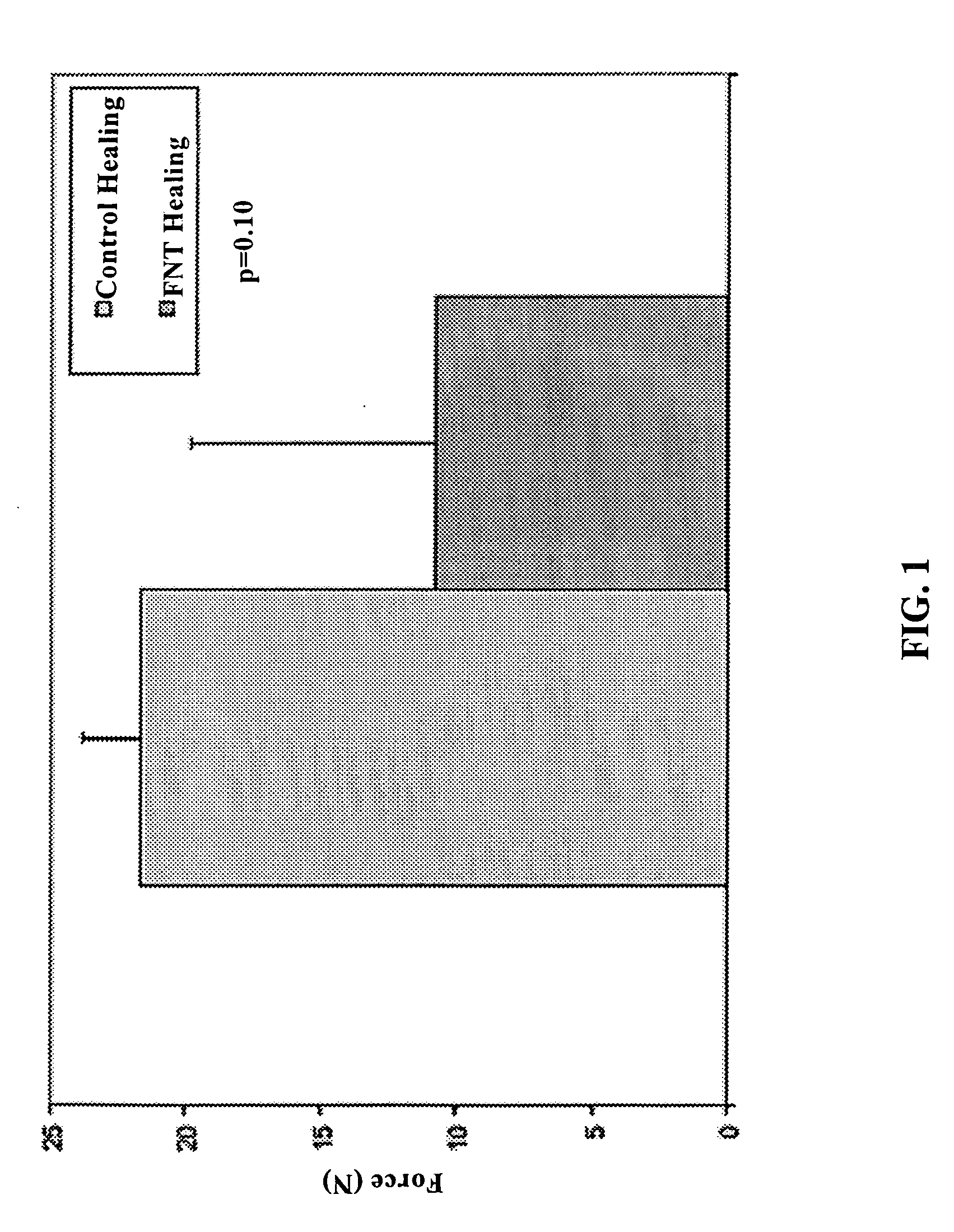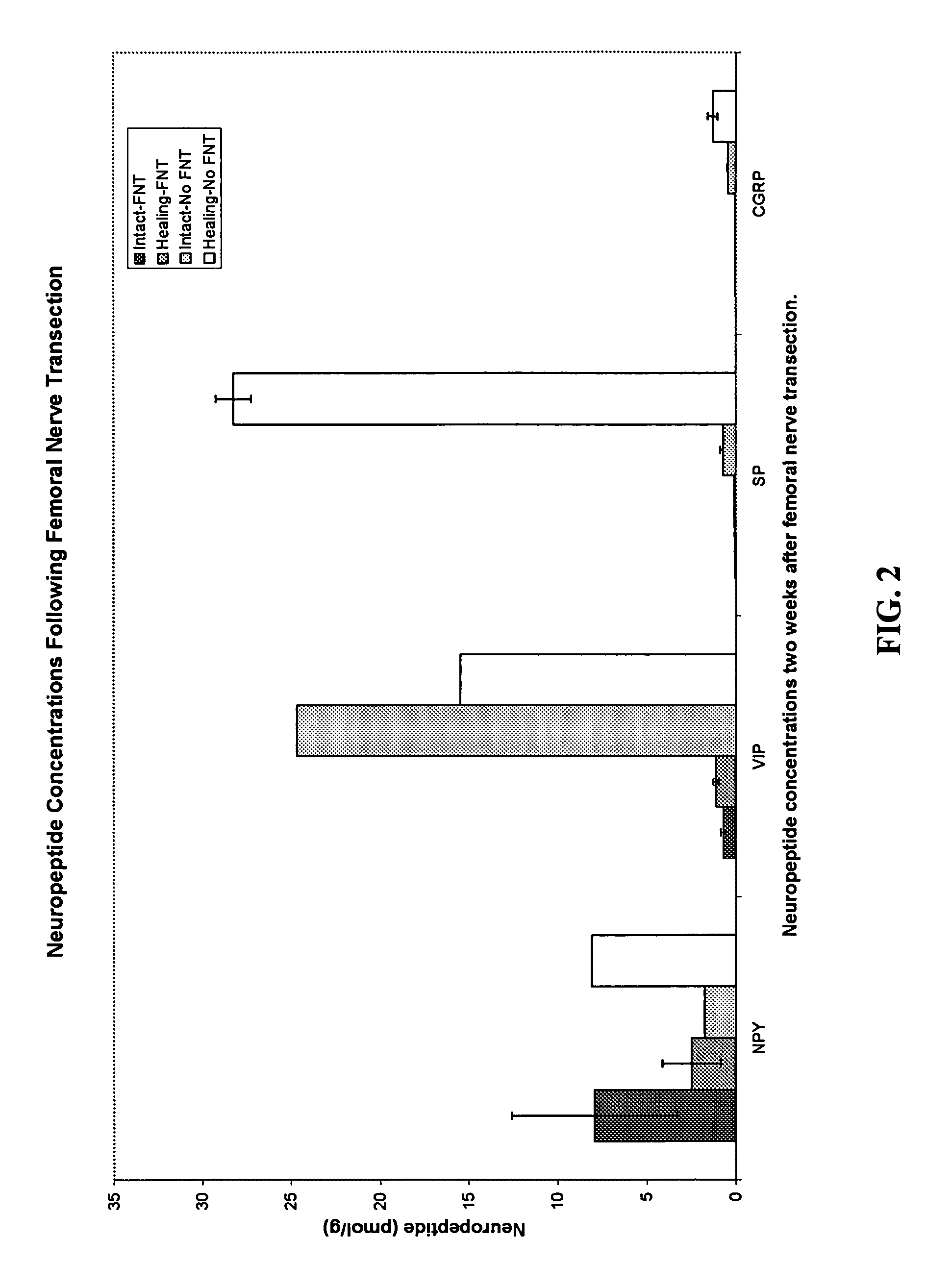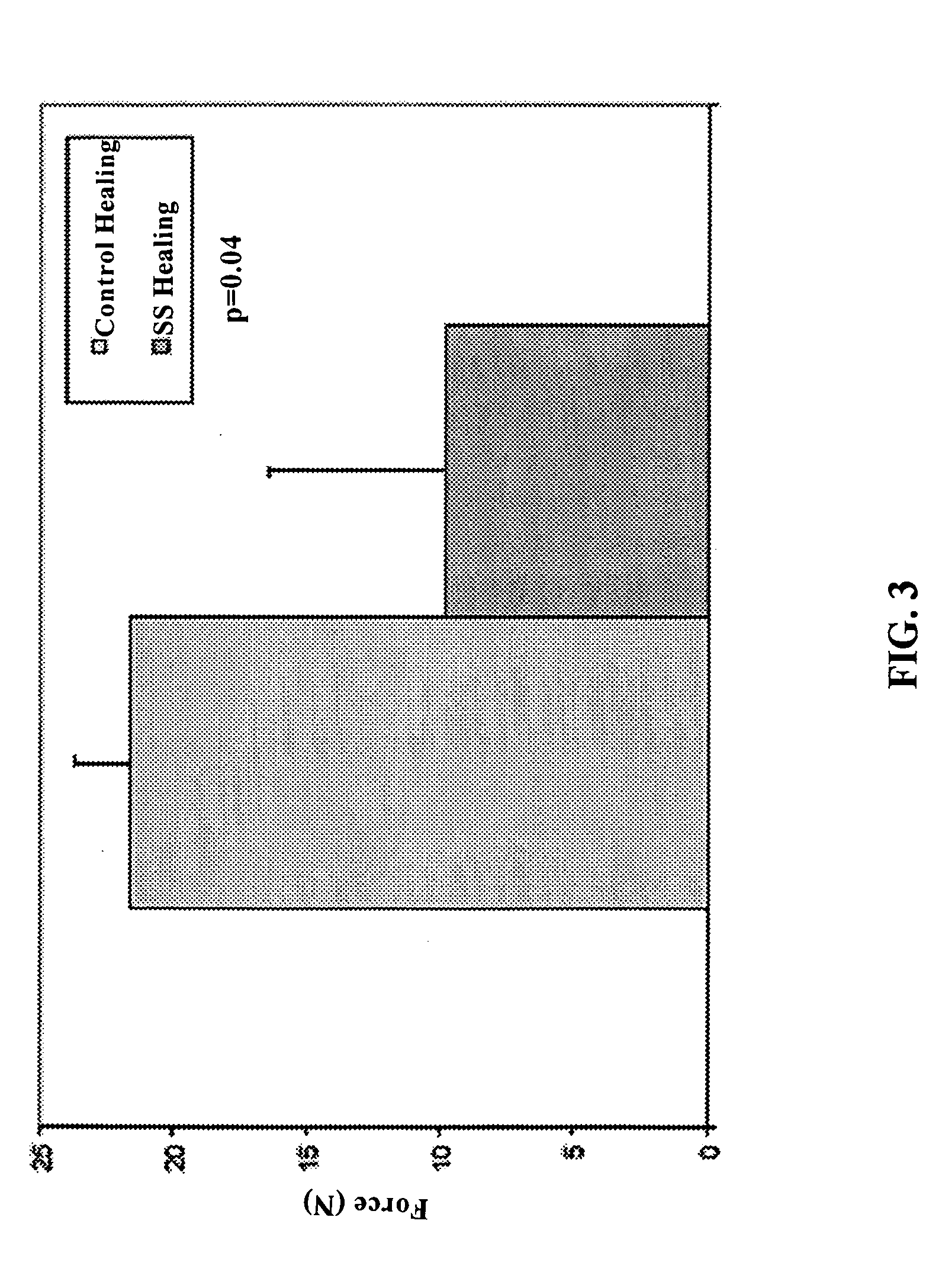Use of neuropeptides for ligament, cartilage, and bone healing
a neuropeptide and ligament technology, applied in the direction of gastrin/cholecystokinin, prosthesis, metabolism disorder, etc., can solve the problems of pain, inflammation, instability of the affected joint, progressive degeneration of the joint or associated organ, and increase discomfort and difficulty of use, so as to speed up the healing of subchondral bone injuries and defects, accelerate the time to complete recovery, and promote the healing of damaged areas
- Summary
- Abstract
- Description
- Claims
- Application Information
AI Technical Summary
Benefits of technology
Problems solved by technology
Method used
Image
Examples
example 1
Femoral Nerve Transection Impairs Healing in a Rat MCL Model
[0076] As noted earlier, ligament healing is a complex problem that is influenced by inflammatory responses, extracellular matrix remodeling, and chemical mediators. The role of neurogenic factors in general, and neuropeptides in particular, in ligament healing remains undefined. The purpose of this Example was to investigate the role of sensory nerves on MCL healing in a neuropathic rat model.
[0077] Surgical Procedure: Thirteen female Wistar rats (278 g to 315 g) were divided into two groups: femoral nerve transection (FNT) or sham control. All rats were anesthetized with isofluorane (isofluorane 0.5-3%). Anesthesia was initiated in an induction chamber and maintained with a facemask. Skin covering the anterior inguinal region was shaved and prepared for surgery. A skin incision approximately 15 mm long was made and the fascia distal to the inguinal was incised. The femoral artery, vein, and nerve were exposed and the fe...
example 2
Surgical Sympathectomy Impairs Healing in a Rat MCL Model
[0088] The purpose of this Example was to investigate the role of sympathetic nerves on MCL healing in another rat model.
[0089] Surgical Procedure: Thirteen female Wistar rats (306 g to 339 g) were divided into two groups: surgical sympathectomy (SS) or sham control. All rats were anesthetized with isofluorane as described in Example 1. A transperitoneal approach was used. The lower abdomen was shaved and prepared for surgery. A skin incision approximately 25 mm long was made. Fascia and abdominal muscle were incised. Abdominal organs were displaced. With the aid of a dissecting microscope, fascia surrounding the deep muscle tissue was separated (with minimal disruption to the muscle tissue) to expose the post-ganglionic sympathetic nerves. The L1-4 nerves were isolated and transected (with removal of a 5 mm segment of the nerves) in the surgical sympathectomy group only. In both groups, the deep muscle tissue was returned t...
example 3
Local Delivery of Neuropeptides
[0097] Local delivery of NPs and NP inhibitors is important to identify the specific roles of individual NPs on healing tissues. An animal model for the local delivery of NPs has been developed and is presented in this Example. Briefly, NP infused mini-osmotic pumps were implanted subcutaneously into the back of rats. A small catheter running from the pump to an intramuscular space above the MCL was secured to the rat.
[0098] To test whether sensory NPs improve healing in femoral nerve transection (FNT) ruptured MCLs, three female Wistar rats (199 g to 203 g) were given SP locally to the MCL. Substance P (103 pg / μl) was infused into a miniosmotic pump and was delivered to a ruptured MCL of a FNT rat (see surgical procedure in Example 1 above). Within minutes of surgical intervention, all rats recovered and had normal movement and behavior (grooming, feeding, etc.). Mechanical testing showed SP-supplemented FNT MCLs had a much greater failure force (74...
PUM
| Property | Measurement | Unit |
|---|---|---|
| strength | aaaaa | aaaaa |
| cartilage strength | aaaaa | aaaaa |
| mechanical | aaaaa | aaaaa |
Abstract
Description
Claims
Application Information
 Login to View More
Login to View More - R&D
- Intellectual Property
- Life Sciences
- Materials
- Tech Scout
- Unparalleled Data Quality
- Higher Quality Content
- 60% Fewer Hallucinations
Browse by: Latest US Patents, China's latest patents, Technical Efficacy Thesaurus, Application Domain, Technology Topic, Popular Technical Reports.
© 2025 PatSnap. All rights reserved.Legal|Privacy policy|Modern Slavery Act Transparency Statement|Sitemap|About US| Contact US: help@patsnap.com



